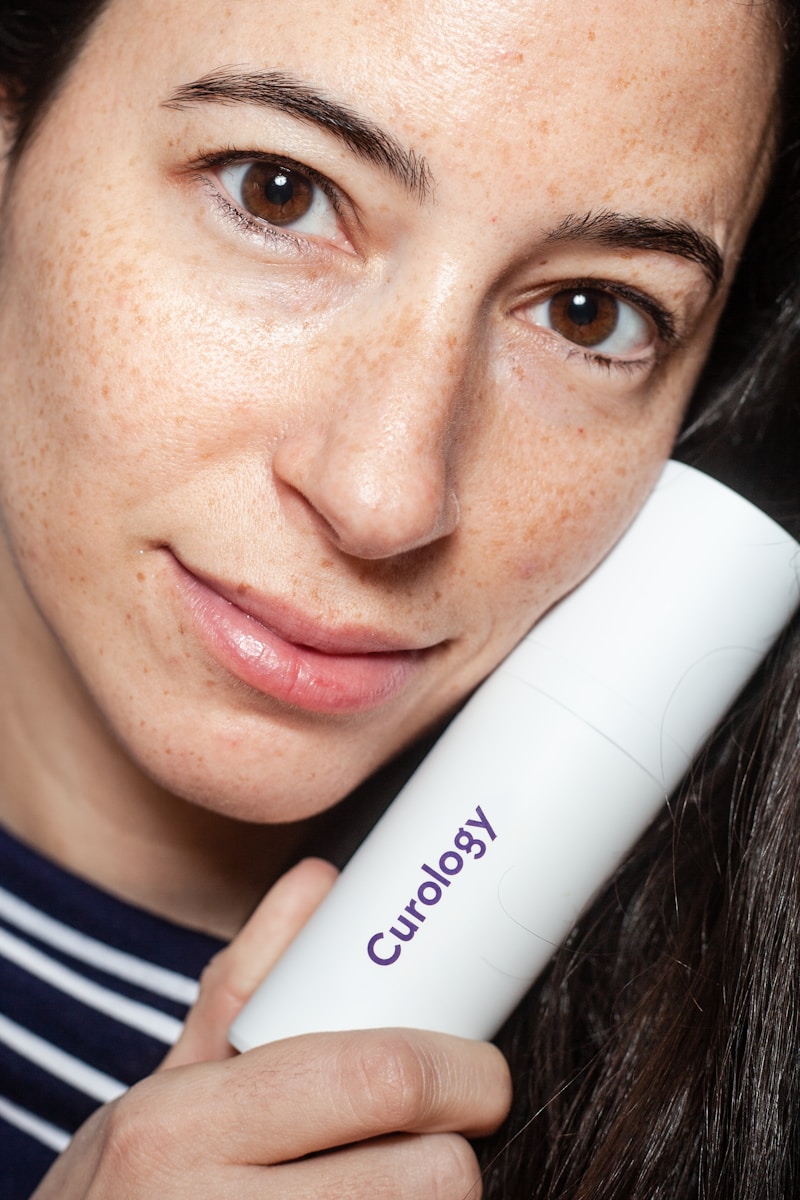How To Get Rid Of Skin Tags: Understanding the Causes and Types of Skin Tags
Skin tags are common skin growths that can develop on various parts of the body. They are typically harmless and painless, but many people choose to have them removed for cosmetic reasons or if they become irritated. Understanding the causes and types of skin tags can help you effectively manage and address them.
Skin tags, also known as acrochordons, are small benign tumors that often occur in skin folds or areas where there is friction, such as the neck, armpits, groin, and eyelids. They are composed of loose collagen fibers and blood vessels, covered by a layer of skin. While their exact cause is unknown, skin tags are thought to be linked to certain factors.
One of the primary causes of skin tags is friction or rubbing of the skin. This can happen from skin-to-skin contact or clothing rubbing against the skin. Obesity and excess weight can also contribute to the formation of skin tags, as the excess skin and folds provide an ideal environment for their development. Furthermore, hormonal changes during pregnancy may increase the risk of skin tags.
There are different types of skin tags based on their appearance and location. The most common type is the pedunculated skin tag, which has a stalk or stem that attaches it to the skin. These are often flesh-colored or slightly darker and can range in size from a few millimeters to several centimeters. The second type is the flat or sessile skin tag, which is flatter and more broad-based, appearing slightly elevated from the skin surface.
Skin tags are usually harmless, but they can sometimes become irritated or experience trauma due to friction, which may cause them to bleed or become painful. If you notice any changes in the size, shape, or color of a skin tag, it is important to have it examined by a healthcare professional to rule out any potential issues.
Understanding the causes and types of skin tags can help you recognize and manage these common skin growths. They are often caused by friction, obesity, and hormonal changes. Skin tags can vary in appearance and may be pedunculated or flat. While generally harmless, it is important to monitor any changes and seek professional advice if necessary.
Effective Home Remedies to Remove Skin Tags Naturally
Skin tags, also known as acrochorda, are small, benign growths that commonly appear on the neck, armpits, groin, and other areas where skin rubs against skin or clothing. While they are generally harmless, skin tags can be a source of discomfort and self-consciousness for many individuals. Fortunately, there are several effective home remedies that can help you get rid of skin tags naturally, without the need for medical intervention.
1. Tea Tree Oil: Tea tree oil has powerful antiseptic and antimicrobial properties that can help remove skin tags. Simply soak a cotton ball in tea tree oil and apply it directly to the affected area. Cover the area with a bandage and leave it overnight. Repeat this process for a few weeks until the skin tag dries up and falls off.
2. Apple Cider Vinegar: Apple cider vinegar is a popular home remedy for various skin conditions, including skin tags. Soak a cotton ball in apple cider vinegar and apply it to the skin tag. Secure it with a bandage and leave it on for a few hours or overnight. The acidity of the vinegar will gradually break down the skin tag, causing it to fall off.
3. Garlic: Garlic contains natural enzymes that can break down skin tags. Crush a garlic clove to extract the juice and apply it directly to the skin tag. Cover it with a bandage and leave it on overnight. Repeat this process daily until the skin tag disappears.
4. Banana Peel: The enzymes and antioxidants present in banana peels can help shrink and remove skin tags. Cut a small piece of banana peel and place the inner side directly on the skin tag. Secure it with a bandage and leave it on overnight. Repeat this process for a few weeks until the skin tag vanishes.
5. Aloe Vera: Aloe vera is renowned for its soothing and healing properties. Apply fresh aloe vera gel directly to the skin tag and massage it gently. Leave it on for a few hours before rinsing it off. Repeat this process daily until the skin tag shrinks and eventually falls off.
6. Essential Oils: Certain essential oils like lavender oil, oregano oil, and frankincense oil have antiseptic and skin-healing properties that can aid in the removal of skin tags. Dilute the essential oil of your choice with a carrier oil, such as coconut oil, and apply it directly to the skin tag. Repeat this process a few times daily until the skin tag disappears.
7. Dietary Modifications: Making certain dietary modifications may also help reduce the occurrence of skin tags. Incorporate more fruits, vegetables, and whole grains into your diet while limiting processed foods and added sugars. This can help maintain healthy skin and reduce the likelihood of skin tag development.
It’s important to note that while these home remedies can be effective, they may not work for everyone or every type of skin tag. If you have a large, persistent, or bothersome skin tag, it’s recommended to consult a healthcare professional for further evaluation and guidance.
READ ALSO: How To Get Rid Of A Cough
Exploring Medical Procedures for Skin Tag Removal
Skin tags are benign growths that often appear in areas where the skin folds or rubs against itself. While they are generally harmless, some people may find them bothersome or unsightly. If home remedies have failed to eliminate your skin tags, you may want to explore medical procedures for skin tag removal. These procedures are typically performed by medical professionals and can provide more immediate and permanent results. In this article, we will discuss some common medical procedures that can help you get rid of skin tags.
One popular medical procedure for removing skin tags is cryotherapy. This procedure involves freezing the skin tag with liquid nitrogen, which causes it to shrink and eventually fall off. Cryotherapy is a quick and relatively painless procedure that can be done in a doctor’s office. However, it may cause some temporary redness, swelling, or blistering in the treated area.
Another option for skin tag removal is cauterization. During this procedure, a medical professional uses a heated instrument, such as a special kind of pen or a high-frequency electrical current, to burn off the skin tag. This method effectively destroys the tissue of the skin tag, causing it to scab and eventually fall off. Cauterization is a relatively quick procedure and is generally well-tolerated by patients. However, it may cause a temporary burning sensation and leave a small scar.
Surgical excision is another medical procedure used to remove skin tags. This method involves using a scalpel or scissors to cut the skin tag off at the base. Local anesthesia is typically used to numb the area before the procedure. Surgical excision is a reliable method for removing skin tags, and it allows for immediate removal of the growth. However, it may leave a small scar and require stitches for larger skin tags.
If you have multiple skin tags or large skin tags in sensitive areas, your doctor may recommend electrosurgery. This procedure uses a high-frequency electrical current to burn off the skin tags. Electrosurgery is precise, effective, and can be done on various sizes of skin tags. However, it may cause some discomfort during the procedure and may require a short recovery period.
Laser therapy is another option for skin tag removal. In this procedure, a laser is used to target and destroy the blood vessels that supply the skin tag. Laser therapy is often a quick and painless procedure, but it may require multiple treatment sessions for complete removal. It is particularly effective for smaller skin tags and may cause minimal scarring.
Before considering any medical procedure for skin tag removal, it is essential to consult with a qualified healthcare professional. They can evaluate your skin tags, discuss the available options, and recommend the most suitable procedure for your specific case. Additionally, they can provide information on the potential risks, benefits, and expected outcomes of each procedure.
If home remedies have proven ineffective for removing skin tags, medical procedures offer alternative options. From cryotherapy to laser therapy, there are various methods available for effectively removing skin tags. It is crucial to consult with a healthcare professional to determine the most appropriate procedure for your individual needs. With the help of medical intervention, you can achieve the skin tag-free appearance you desire.
Tips for Healthy Skin: Preventing Skin Tags
Maintaining healthy and beautiful skin is important for everyone. One common skin concern that many people face is the development of skin tags. These small, fleshy growths can appear on various parts of the body, including the neck, armpits, eyelids, and under the breasts. While skin tags are harmless, they can be unsightly and cause discomfort. To keep your skin tag-free, here are some tips for healthy skin:
- Keep Your Skin Clean and Dry:
Maintaining proper hygiene is crucial in preventing skin tags. Cleanse your skin regularly using mild, fragrance-free cleansers. Avoid scrubbing your skin vigorously, as it can irritate the skin and increase the risk of developing skin tags. After washing, ensure your skin is completely dry, especially in areas prone to skin tags, as moist environments can promote their growth. - Be Mindful of Clothing Choices:
Tight clothing and accessories can cause friction and irritation, leading to skin tags. Opt for loose-fitting clothes made from breathable fabrics to reduce the chances of skin tags forming. Avoid wearing tight collars or jewelry that constantly rub against your skin. If you notice any irritation or redness, consider changing your clothing or jewelry to prevent skin tag development. - Maintain a Healthy Weight:
Skin tags are more common in individuals who are overweight or obese. Excess weight can result in skin folds and increased friction, increasing the likelihood of skin tags. Incorporate a balanced diet and regular exercise into your routine to achieve and maintain a healthy weight. By doing so, you can reduce the risk of skin tags and improve overall skin health. - Avoid Shaving Over Skin Tags:
If you already have skin tags, it’s important to avoid shaving directly over them. Shaving can irritate the skin tag and potentially cause bleeding. Instead, carefully maneuver around the skin tag or consider alternative hair removal methods such as waxing or using depilatory creams. - Moisturize Your Skin:
Proper hydration is essential for healthy skin. Dry skin is more prone to irritation, which can contribute to the formation of skin tags. Regularly moisturize your skin using hydrating lotions or natural oils. Look for products that are fragrance-free and suitable for your skin type. Moisturizing your skin can help maintain its elasticity and reduce the risk of skin tags. - Protect Your Skin from the Sun:
Excessive sun exposure can damage the skin and weaken its structure, making it more susceptible to skin tags. Apply a broad-spectrum sunscreen with at least SPF 30 to protect your skin from harmful UV rays. Wear protective clothing such as hats and long-sleeved shirts when spending extended periods outdoors. - Avoid Picking at Skin Tags:
If you develop a skin tag, resist the urge to pick or pull at it. This can cause pain, bleeding, and potentially lead to infection. If you’re concerned about a skin tag or it’s causing discomfort, consult a dermatologist or healthcare professional for safe removal options.
By implementing these tips for healthy skin, you can minimize the risk of skin tag formation and promote overall skin wellness. Remember, prevention is key, and taking care of your skin is an essential part of maintaining good health.
When to Seek Professional Help for Skin Tag Removal
Skin tags are benign growths that often appear on the neck, armpits, or groin area. While most skin tags are harmless and can be safely removed at home, there are instances when seeking professional help for removal is necessary. It is important to understand when it is appropriate to consult a dermatologist or healthcare provider for skin tag removal.
1. If the skin tag is causing discomfort or pain: Skin tags are usually painless and do not cause any discomfort. However, if a skin tag becomes irritated or gets caught on clothing or jewelry, it can become painful. In such cases, it is advisable to seek the assistance of a professional to safely remove the skin tag and alleviate any pain or discomfort.
2. If the skin tag bleeds or changes in appearance: Any sudden changes in the appearance of a skin tag, such as bleeding, color change, or rapid growth, should be evaluated by a dermatologist. These changes can be signs of a more serious condition that requires medical attention.
3. If self-removal methods are unsuccessful: Many people choose to remove skin tags at home using various remedies such as tying off the base with a thread or applying over-the-counter creams. However, if these methods are ineffective or the skin tag keeps growing back, it is best to consult a professional for a more permanent solution.
4. If you are unsure whether it is a skin tag: While most skin tags are easily recognizable, there are instances when a growth may be mistaken for a skin tag but could be a different skin condition. If you are uncertain about the nature of the growth, it is essential to consult a dermatologist for a proper diagnosis and appropriate treatment.
5. If the skin tag is in a sensitive area: Skin tags located in sensitive areas such as the eyelids, genitals, or near mucous membranes should always be evaluated and removed by a healthcare professional. These delicate areas require specialized care to avoid any complications or damage.
It is important to note that professional removal methods for skin tags may include procedures such as cryotherapy, electrocautery, or surgical excision. These methods are performed under sterile conditions and are generally safe and effective when carried out by a trained healthcare provider.
While many skin tags can be safely removed at home, there are instances when it is necessary to seek professional help. If a skin tag is causing discomfort, bleeding, changing in appearance, or located in a sensitive area, consulting a dermatologist or healthcare provider is advisable. They can evaluate the condition, provide a proper diagnosis, and recommend the most appropriate method for safe and effective skin tag removal.
Conclusion
Understanding the causes and types of skin tags is crucial in effectively managing and removing them. Skin tags are benign growths that can occur due to friction, hormonal changes, obesity, and genetics. By recognizing the different types of skin tags, such as stalked and acrochordons, individuals can tailor their treatment methods accordingly.
Fortunately, there are several effective home remedies to remove skin tags naturally. These remedies include apple cider vinegar, tea tree oil, and essential oils like lavender and frankincense. These natural remedies can be applied topically to the affected area, helping to dry out and shrink the skin tags over time. Additionally, using a combination of baking soda and castor oil or tying off the skin tags with dental floss are alternative methods that have shown promising results.
While home remedies can be effective, some skin tags may require more specialized medical procedures for removal. Cryotherapy, which involves freezing the skin tags with liquid nitrogen, is a common procedure performed by healthcare professionals. Other methods include cauterization, ligation, and excision, all of which are typically performed under local anesthesia. These minimally invasive procedures are safe and can be highly effective in removing skin tags.
Prevention is the key to maintaining healthy skin and reducing the likelihood of developing skin tags. Practicing good hygiene and keeping the skin clean and dry can help prevent skin tags caused by friction. Maintaining a healthy weight through regular exercise and a balanced diet can also reduce the risk of skin tag development. It is important to avoid irritating the skin through excessive rubbing or the use of harsh chemicals, as this can contribute to the formation of skin tags.
While skin tags are generally harmless, there are certain instances when professional help is necessary for their removal. If a skin tag becomes painful, bleeds, changes in color, or grows rapidly, it is advisable to consult a dermatologist or healthcare professional. They can accurately diagnose the skin tag and determine the most appropriate course of action for removal.
Understanding the causes, types, and treatment options for skin tags is essential for effectively managing and removing them. Home remedies can be a convenient and natural option, while medical procedures provide a more specialized approach. Preventive measures can help reduce the occurrence of skin tags, and seeking professional help is recommended in certain cases. By following these guidelines, individuals can take control of their skin health and achieve smooth, blemish-free skin.
Originally posted 2024-02-03 15:32:10.



